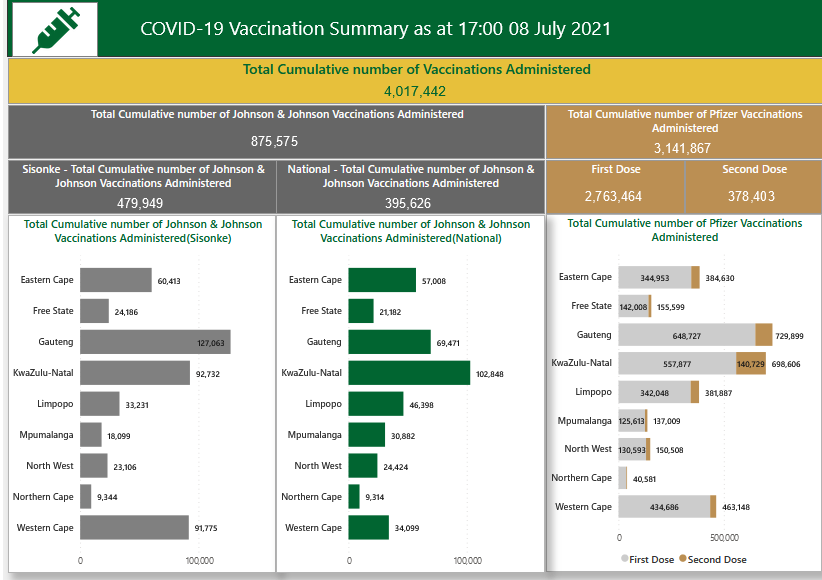
[Thread] 1. GOOD NEWS about vaccine acceptance: MORE people in SA are now willing to be vaccinated. The latest results from @NIDS_CRAM show:
1. In Feb/March 71% of SAs said they'll consider being vaccinated.
2. In April/May this had increased to 76%.

1. In Feb/March 71% of SAs said they'll consider being vaccinated.
2. In April/May this had increased to 76%.


2. Where does this info come from?
1. About 5000 study participants got asked to respond to the same statement in Feb/March and April/May
2. Statement = "If a vaccine for #COVID19 were available, I would get it."
2. When?
* 2 Feb to 1 March
* 6 April to 11 May
1. About 5000 study participants got asked to respond to the same statement in Feb/March and April/May
2. Statement = "If a vaccine for #COVID19 were available, I would get it."
2. When?
* 2 Feb to 1 March
* 6 April to 11 May
3. You can see the increase in vaccine acceptance here. Acceptance = "strong agreement" (green) + "some agreement" + "been vaccinated" (aquamarine):
1. Feb/March: 55% (green) + 16% (light green) = 71%
2. April/May: 64% (green) + 10% (light green) + 2% (aquamarine) = 76%
1. Feb/March: 55% (green) + 16% (light green) = 71%
2. April/May: 64% (green) + 10% (light green) + 2% (aquamarine) = 76%

4. Why did vaccine acceptance increase? Researchers say during the April/May arm of the survey, the #Sisonke study was well underway and vaccination had therefore become less of an abstract concept, rather a possibility, and doubtful people could see that "vaccinees" survived.
5. @NIDS_CRAM found that 20% of people who in April/May said they had been vaccinated against #COVID19, were people who in Feb/March said that they strongly disagreed with vaccinations.
6. The same thing has happened in many other countries: vaccine hesitancy declined when they started to roll-out vaccines and more people became willing to be vaccinated against #COVID19.
7. So what do we do with this info? @NIDS_CRAM researchers say we should use it in #COVID19 #vaccine promotion campaigns:
We should frame campaigns around the message that most people in SA say they'll take a jab, so in other words, that vaccine acceptance is the norm in SA.
We should frame campaigns around the message that most people in SA say they'll take a jab, so in other words, that vaccine acceptance is the norm in SA.
8. @NIDS_CRAM says vaccination campaigns that promote vaccine acceptance as the norm, have increased vaccination rates in some other countries (addressing vaccine myths in campaigns are trickier, because you run the risk of amplifying false information). 

9. What else did we learn from the survey?
1. One in five SAs worry that jabs are unsafe.
2. The most common reason why some people think jabs are unsafe, is because they argue the short period in which #COVID jabs were produced, means they were not adequately tested.
1. One in five SAs worry that jabs are unsafe.
2. The most common reason why some people think jabs are unsafe, is because they argue the short period in which #COVID jabs were produced, means they were not adequately tested.
10. How do we use the info re safety concerns in vaccination campaigns?
1. Explain that much of the development work had been done during the SARS-CoV-1 outbreak (so the foundation had already been laid for SARS-CoV-2 when the pandemic hit)
2. Be transparent about side effects

1. Explain that much of the development work had been done during the SARS-CoV-1 outbreak (so the foundation had already been laid for SARS-CoV-2 when the pandemic hit)
2. Be transparent about side effects


11. We also need to highlight in campaigns that the unprecedented amount of collaboration across research fields + large investments (money) in #COVID jabs meant that they could be developed at an unprecedented speed, but no research steps were skipped. bit.ly/3dXVsqC
12. Lastly, @NIDS_CRAM found that 40% of people who didn't want to get vaccinated were willing to change their mind if a community leader was vaccinated + stayed healthy. We should therefore use local community leaders in campaigns, as Limpopo has done (they used church leaders). 

• • •
Missing some Tweet in this thread? You can try to
force a refresh















